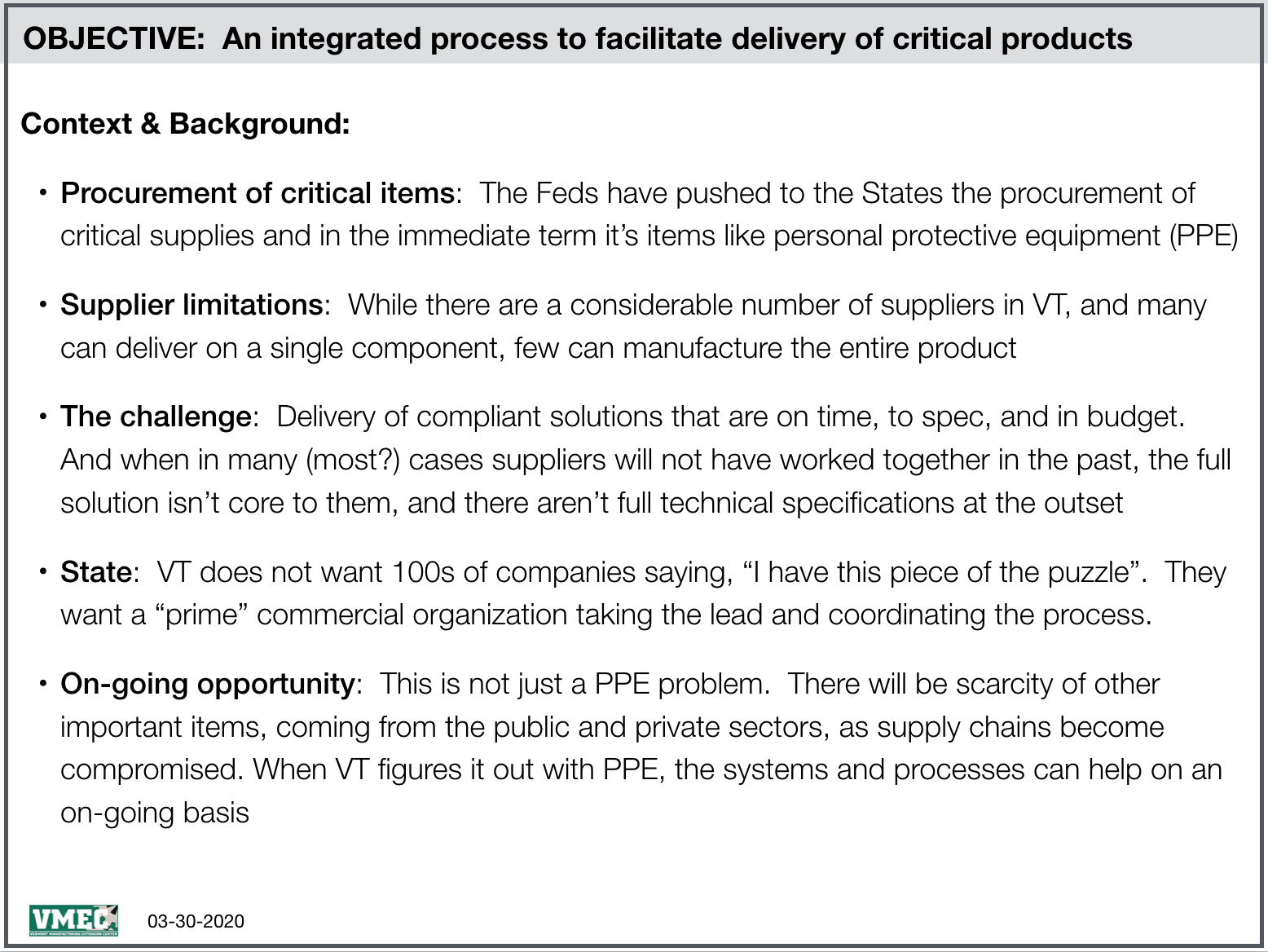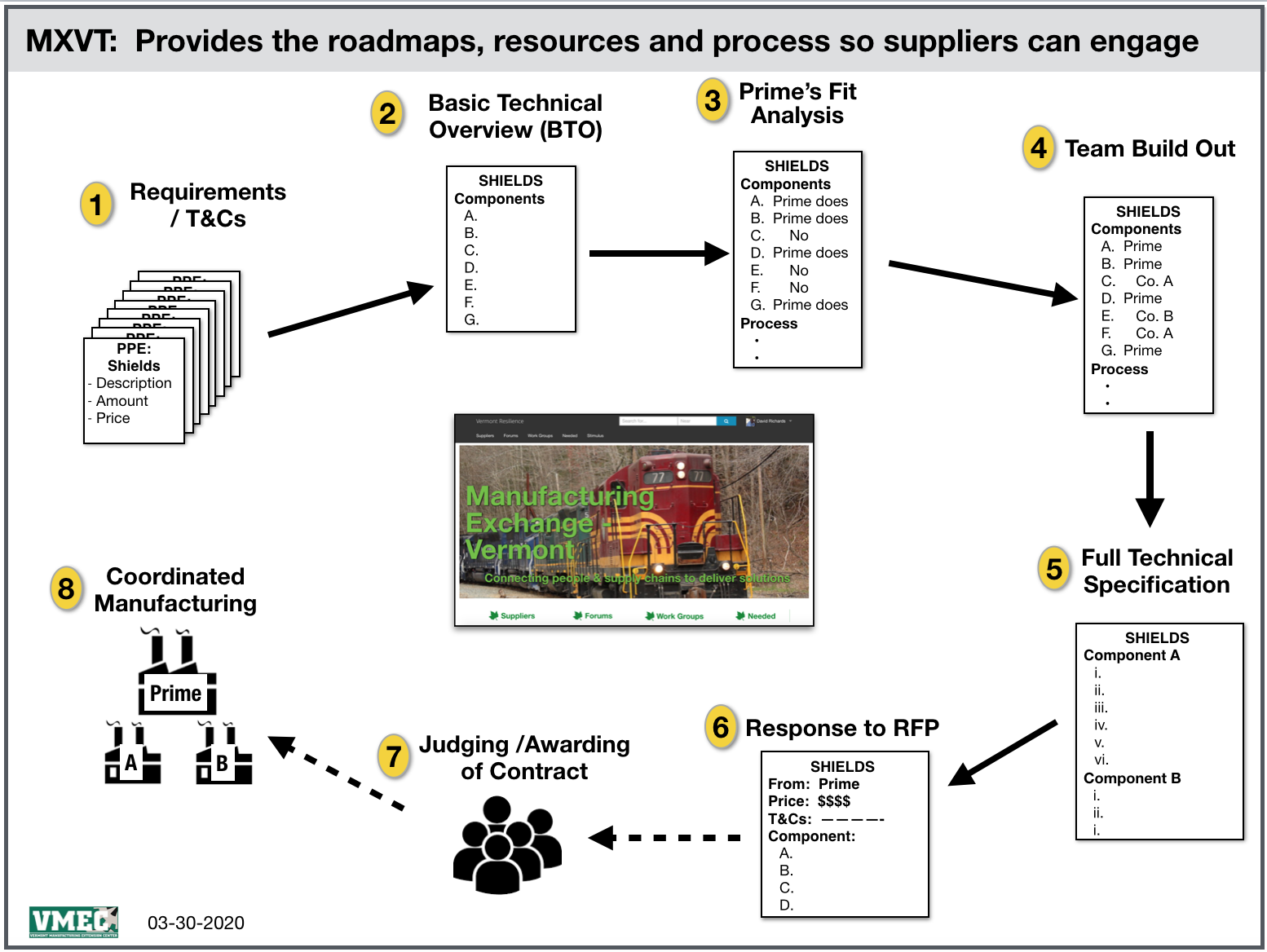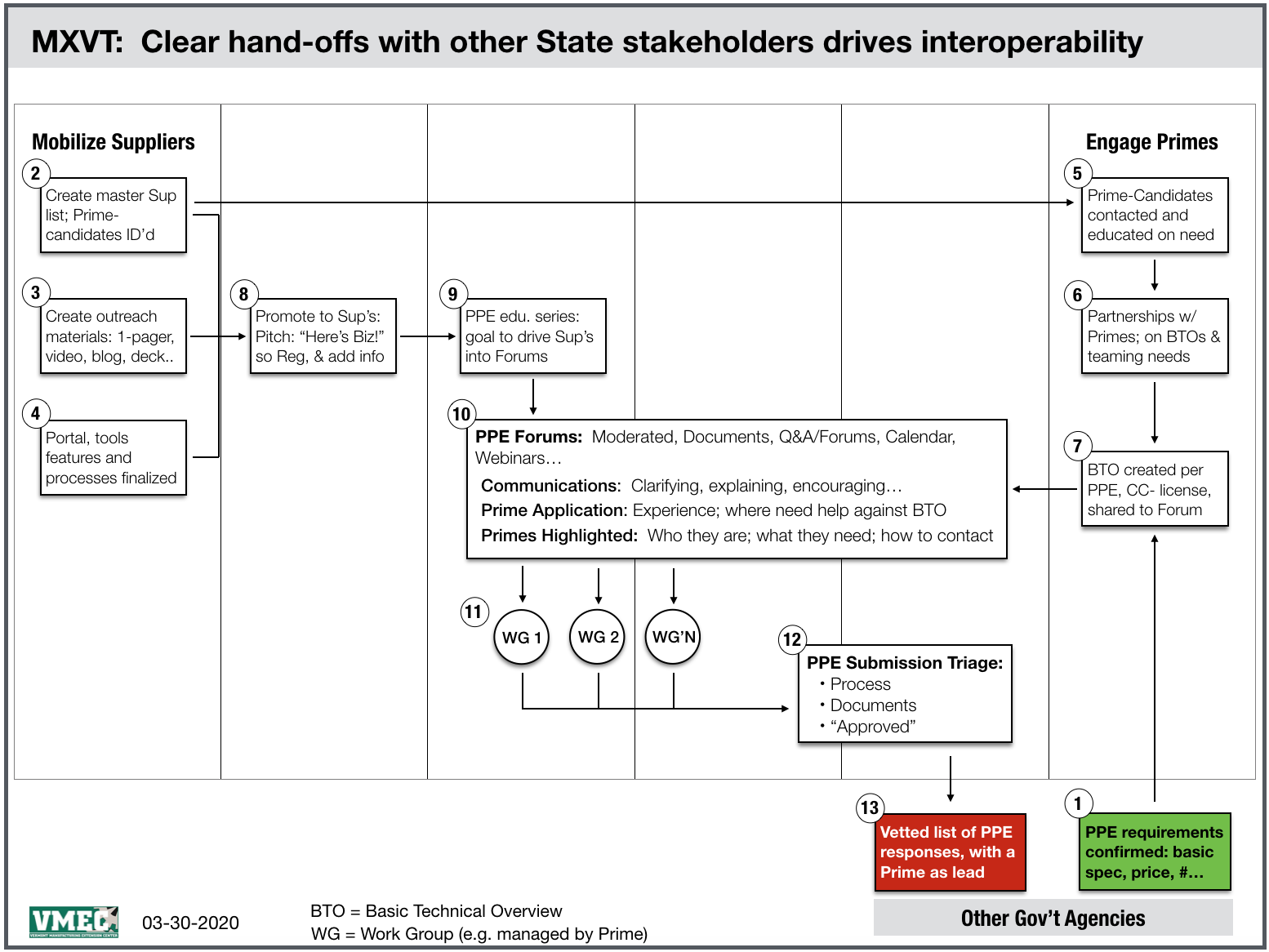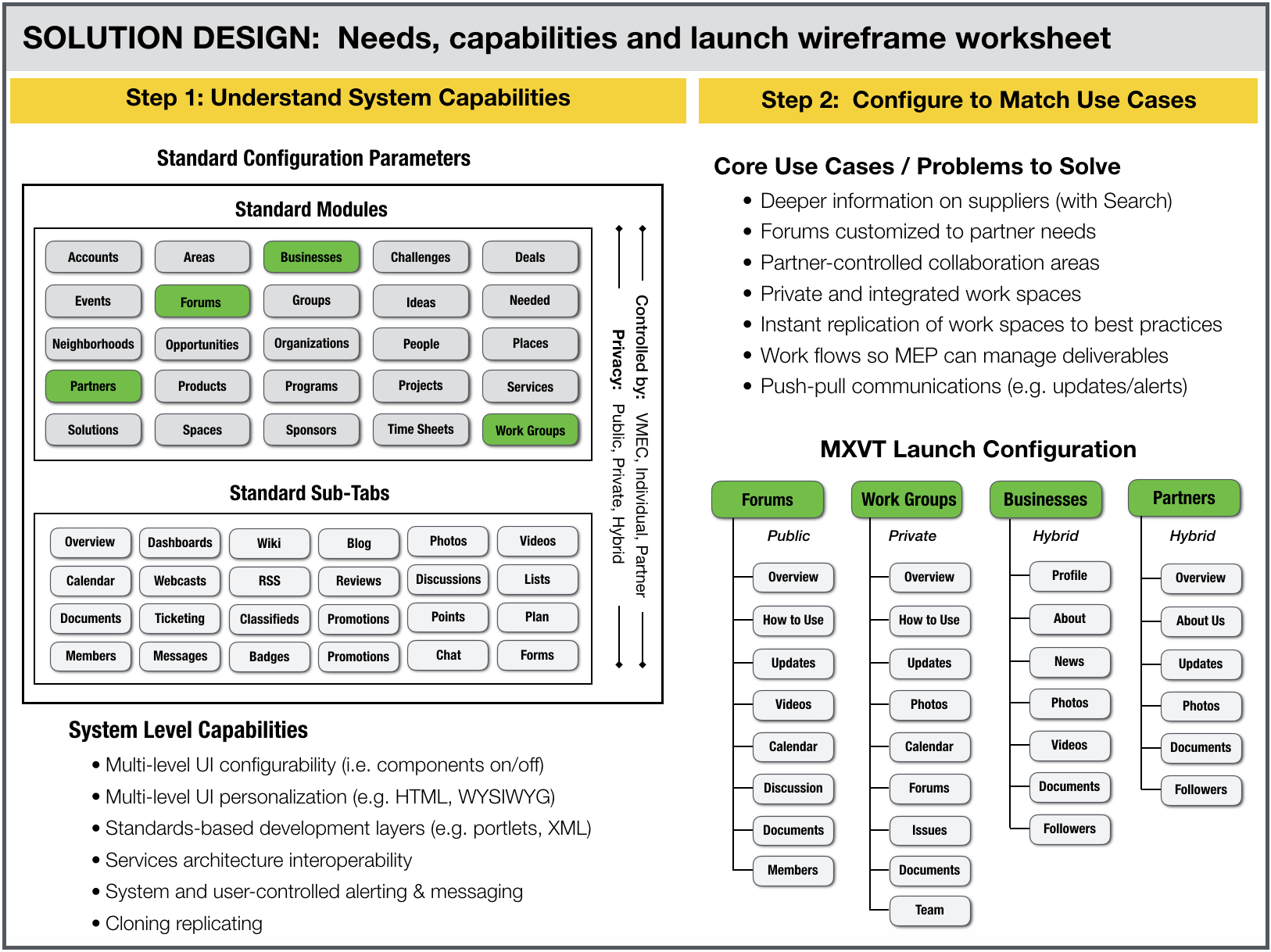MXVT
MXVT Home
Background
The Vermont Manufacturing Extension Center (VMEC) was faced with an immediate and compelling pain point. PPE products were stuck in China and immense domestic demand meant that First Responders and healthcare workers in Vermont were at risk; there was no single supplier in the state able to produce the items and the friction and inefficiency in the then current processes to connect the dots for making this all happen was too high, especially in a time of crisis. The existing process at the time might charitably be called email, phone calls and spreadsheet hell.
Over the course of the first week, a joint team of VMEC and OHI senior managers went through the following steps, ending in a MVP that's being refined to this day.
- Needs Clarification
- Solution Workflow
- VMEC System Flow (& handoff points)
- Capabilities Review & System Design
- Prototype / Pilot Config & Development
Below is a short description of each step and a key process document generated during the engagement.
1. Needs Clarification
This took only minutes. The VMEC team could clearly articulate the challenges they were facing in terms of connecting suppliers with State agencies and the healthcare institutions desperately looking for help. The following slide is from an early presentation to key State partners.

2. Solution Workflow
With the background and needs established, the next step was to describe how the process with up-stream customers, VMEC and suppliers should work in an idealized state.
This flow chart confirmed what information does and doesn't exist, which stakeholders need to be involved and where, what systems the process touches, and finally, what State policies are or are not in place and that might need to be modified or amended.

3. VMEC System Flow (& handoff points)
This step defined the proposed system flow from VMEC's point of view. Two key points are worth noting. First, it highlighted that handoffs between VMEC and its upstream and downstream partners need to be clearly articulated. That is, to codify what's needed to start the process and what the end-customer (presumably another state agency) expects in terms of the deliverable. And second, it clarified, at a very high level, the way the process should work internally to guarantee the system can accomplish its objectives and with available resources (i.e. people, systems, data, etc.).

4. Capabilities Review & (iterative) System Design
This step began by educating the VMEC team as to the capabilities of OHI's "Connect" platform. Connect is a robust, cloud based, enterprise-class software application designed to create large, private-public online communities and ecosystems (sometimes known as supply chains).
With the VMEC team understanding what was possible, a base system was brought up with a standard configuration applied. The actual "bringing" up of the system is highly automated and takes only minutes.
The team, lead by a Solution Architect and Application Specialist, then went through an iterative process of "turning things on and off," adding content, changing roles and permissions, inviting in test users, and all based on the target use cases. This process typically takes a few days to a week, as it did with VMEC.

Sign in to add your comment.
